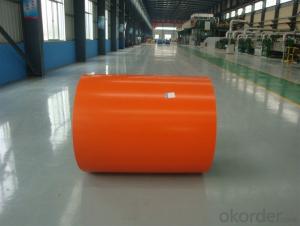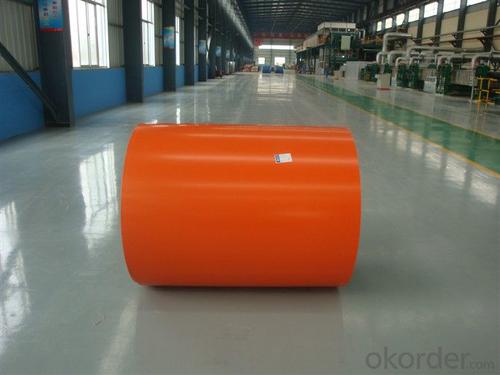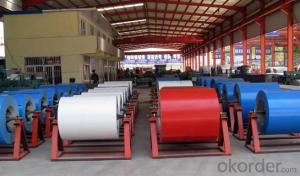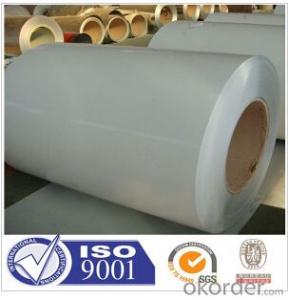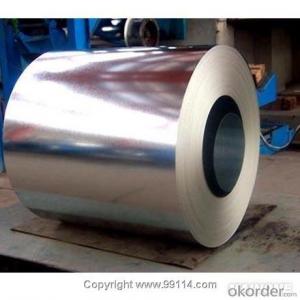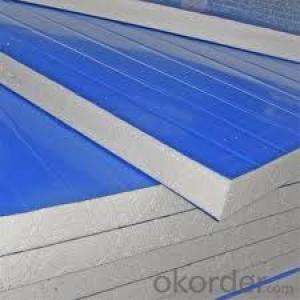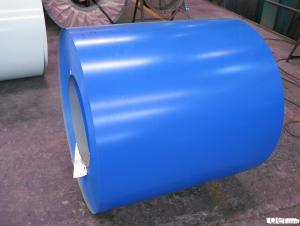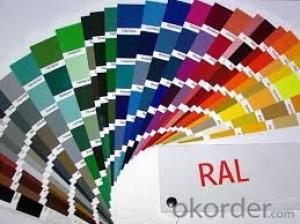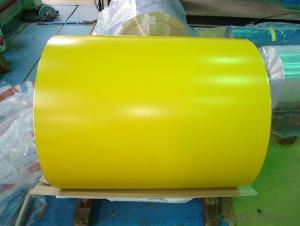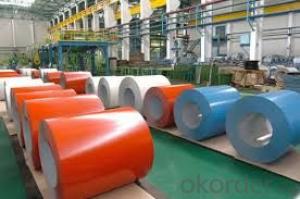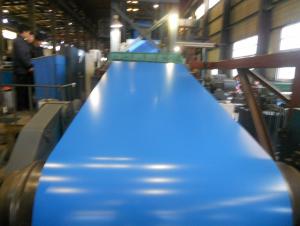ZHONGGUO SHANDONG BOXING ZHONG TAI PRE-PAINTED GALVANIZED STEEL COIL
- Loading Port:
- Tianjin
- Payment Terms:
- TT OR LC
- Min Order Qty:
- 20 m.t.
- Supply Capability:
- 8000 m.t./month
OKorder Service Pledge
OKorder Financial Service
You Might Also Like
PRE-PAINTED GALVANIZED STEEL COIL 7210490000 PRE-PAINTED GALVANIZED STEEL SHEET
THICKNESS:0.18mm-1.5mm
WIDTH:900mm-1250mm
COATING MASS:Z30-Z275
PAINT:PE、HP、HDP、PVDF、SMP、MATT、PVDF
COLOR:RAL Scale
COIL INNER DIAMETER:508mm/610mm
COIL WEIGHT:3mt-7mt
BASE MATERIAL:Hot-dip GALVANIZED Steel
In continuous units in cold rolled steel strip, galvanized steel (electro galvanized and hot dip galvanized) as substrate, after surface pretreatment (degreasing and science processing), using the method of roll coating, coated with a layer or multi-layer liquid coating of plate, after baking and cooling income is the coating steel plate. Because the coating can have a variety of colors, on the habits of the coated steel sheet is called color coating steel plate. Because the coating is carried out before the sheet metal forming, in foreign countries which is called pre coating plate.
Color coated steel sheet is an organic coating coating on the steel surface, it has the advantages of beautiful appearance, bright color, high strength, good corrosion resistance, easy processing molding, but also allows the user to reduce costs, reduce pollution.
From the United States in 1935 to establish the first continuously coated steel line to begin, color coated steel plate has been widely applied, the current color coated plate varieties, about more than 600 kinds, the advantages of color coated sheet and organic polymer and steel plate of the two, which has good colorability, organic polymer molding, corrosion resistance and decorative, and steel plate with high strength and easy processing, can easily be punching cutting, bending, deep drawing processing. Made this makes organic coated steel sheet products have excellent practical, decorative, workability, durability.
- Q: I'm talking about the sort of carbon fiber that's used in the auto industry (mostly in supercars).If an object made of steel were to be copied by an exact same object, but made of carbon fiber - how lighter would the carbon fiber object be?For example, if a table is made of steel and it weighs X, how much will it weigh if it were made of carbon fiber?Thanks.
- In most applications, you do not want to make the graphite fiber composite object the same size as the steel object. You want it to have the same strength. So... the benefit of using the composite is not just the difference in density. What you really want to compare is the specific strength and you can define this slightly differently depending on your application. As a simple example, suppose you need to hang a weight of 100 pounds from a beam with a bar (so the load is pure tension) and not have the weight permanently stretch the bar (so stress in the bar is less than the yield stress). You can calculate the cross sectional area of steel and compare that to the cross sectional area of the graphite fiber composite required. If your application is more complicated, say it has to support the load and flex up to 10 degrees and survive some impact loading and operate at a max temperature of 200C, then you have more homework to do to select the best material. And... if you are not rich enough so that money is no object, you also need to consider the cost.
- Q: How are steel coils priced in the market?
- Steel coils are priced in the market based on various factors such as the current demand and supply levels, raw material costs, production and transportation expenses, market competition, and overall market conditions. Additionally, quality, size, and specifications of the steel coils also play a role in determining their pricing.
- Q: What is the diffrent Aluminized steel Type 1. stainless steel 409 430?
- Stainless steel 400 Series—ferritic and martensitic chromium alloys Type 409—cheapest type; used for automobile exhausts; ferritic (iron/chromium only) Type 430—decorative, e.g., for automotive trim; ferritic. Good formability, but with reduced temperature and corrosion resistance. Today, almost all bulk metal materials that are referred to loosely as aluminium, are actually alloys. For example, the common aluminium foils are alloys of 92% to 99% aluminium. Aluminized steel Type 1: 1xx.x series are minimum 99% aluminium
- Q: How are steel coils used in the manufacturing of automotive bodies?
- Steel coils are used in the manufacturing of automotive bodies as they are transformed into sheets which are then stamped and formed into various components such as body panels, frames, and structural reinforcements. These coils provide the necessary strength and durability required for the construction of car bodies, ensuring safety and stability on the road.
- Q: How are steel coils inspected for elongation using elongation testers?
- Steel coils are inspected for elongation using elongation testers by following a specific procedure. First, a representative sample is taken from the steel coil, which is then prepared for testing by cutting it into a specific size and shape. The sample is usually in the form of a flat strip. The prepared sample is then placed into the elongation tester, which consists of two clamps. One end of the sample is securely held in one clamp, while the other end is held in the other clamp. The clamps are designed to prevent any slippage during the testing process. Once the sample is properly clamped, the elongation tester applies a tensile force to the sample. This force gradually increases, causing the sample to elongate. As the sample elongates, the tester measures the change in length using a precision measuring instrument, such as a strain gauge or an extensometer. The elongation tester records the original length of the sample before the test and continuously measures the length as the force is applied. The elongation is calculated by subtracting the original length from the final length of the sample and then dividing it by the original length. This gives the percentage of elongation. The obtained elongation value is compared to the specified elongation requirements set by industry standards or customer specifications. If the elongation falls within the acceptable range, the steel coil is deemed to have passed the elongation test. If the elongation value exceeds the allowable limits, the steel coil may be rejected or undergo further investigation to determine the cause of elongation. Overall, the process of inspecting steel coils for elongation using elongation testers involves taking representative samples, clamping them securely, applying a tensile force, measuring the change in length, and calculating the percentage of elongation. This helps ensure the quality and mechanical properties of the steel coils, thereby meeting the desired standards and requirements.
- Q: I am reading the book The Cure For All Advanced Cancers by Hulda Regehr Clark.She writes for example: cancer can be caused by exposure to heavy metals, like nickel and chromium from stainless steel cookware. Stainless steel cookware releases chromium and nickel, two of the most carcinogenic metals.Are there any studies done measuring how much nickel and cadmium can be released from the regular use of stainless steel cookware?Is this a commonly accepted opinion that use of stainless steel cookware is dangerous?If not stainless steel, what kind of cookware to use? I heard that non-stick cookware also releases some harmful chemicals.
- perfluorooctanoic acid is a chemical used to make nonstick cookware. It has been shown to cause cancer in lab animals. The epa has asked companies that use that chemical to phase it out of the cookware, just in case. But it has not been shown to cause cancer in humans. Stainless is not known to cause any type of health problems. Cast iron is healthier and anodized aluminum is great too.
- Q: How are steel coils used in the production of aerospace structures?
- Various methods are employed in the production of aerospace structures, with steel coils being a key component. Aircraft frames and components are commonly manufactured using steel coils. These coils are processed through a series of operations, such as cutting, bending, and welding, to create the necessary structural members of an aircraft, including fuselage sections, wing spars, and landing gear. The preference for steel coils in aerospace applications is due to their exceptional strength and durability. They are capable of withstanding the immense forces and stresses experienced during flight and landing. By utilizing steel coils, aerospace structures are able to maintain the required structural integrity, even in harsh operating conditions. Moreover, steel coils are also utilized in the production of aerospace fasteners and connectors. These components are crucial for securely holding various parts and structures together. Bolts, screws, and rivets, which are essential for assembling different sections of an aircraft, are commonly manufactured using steel coil materials. The strength and reliability of steel coils make them ideal for fastening applications, ensuring the secure connection of aerospace structures. Additionally, steel coils find application in the production of aerospace equipment and machinery. Heavy machinery and specialized equipment are integral to aerospace manufacturing processes. Steel coils are frequently used in the construction of these machines, as they provide robust and sturdy frameworks. Tooling, jigs, fixtures, and molds, which are necessary for producing aerospace structures with precision and accuracy, often incorporate steel coils. In conclusion, steel coils play a vital role in the production of aerospace structures. They are utilized as raw materials for manufacturing aircraft frames and components, fasteners and connectors, as well as aerospace equipment and machinery. The strength, durability, and reliability of steel coils make them indispensable in the aerospace industry, ensuring the safety and integrity of aerospace structures.
- Q: Can steel coils be perforated?
- Yes, steel coils can be perforated.
- Q: what do you think about producebility of low density steel? for example: can density of 1020 steel (or ony others) be decreased without any loss of other properties.
- If a material has a lower density than steel, then it isn't steel.
- Q: What are the current trends in the steel coil industry?
- Some current trends in the steel coil industry include the increasing demand for high-strength steel coils due to their durability and lightweight properties. There is also a growing focus on sustainability and environmentally friendly practices, leading to the development of eco-friendly coatings and recycling initiatives. Additionally, digitalization and automation are becoming more prevalent, enhancing efficiency and productivity in steel coil manufacturing processes.
Send your message to us
ZHONGGUO SHANDONG BOXING ZHONG TAI PRE-PAINTED GALVANIZED STEEL COIL
- Loading Port:
- Tianjin
- Payment Terms:
- TT OR LC
- Min Order Qty:
- 20 m.t.
- Supply Capability:
- 8000 m.t./month
OKorder Service Pledge
OKorder Financial Service
Similar products
Hot products
Hot Searches
Related keywords
